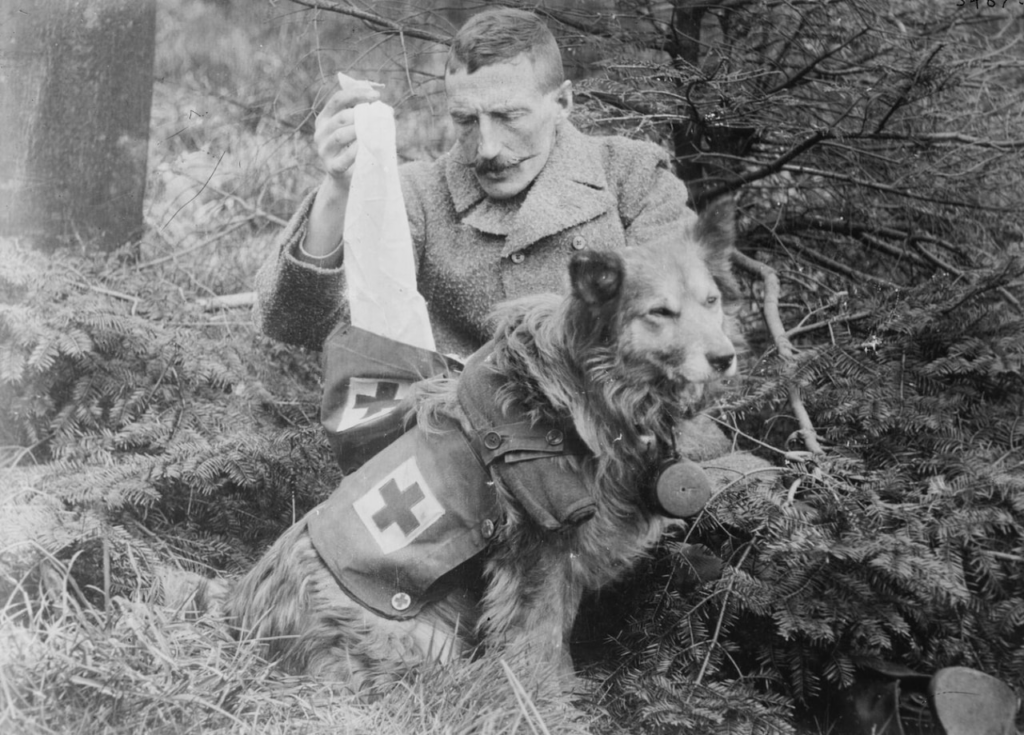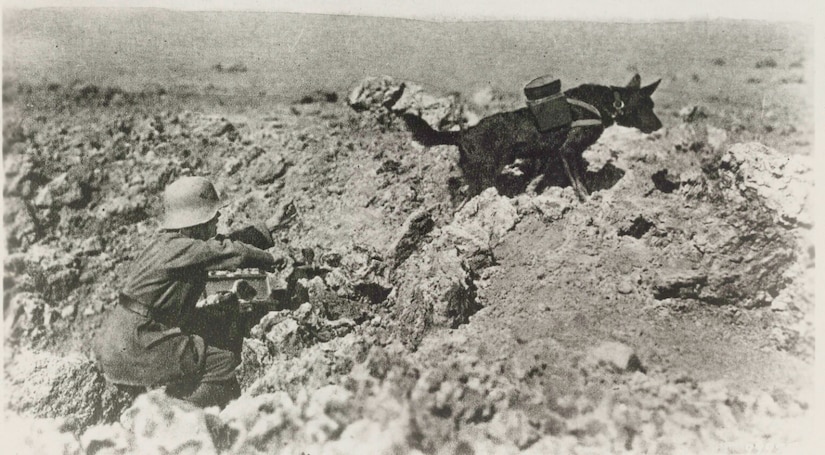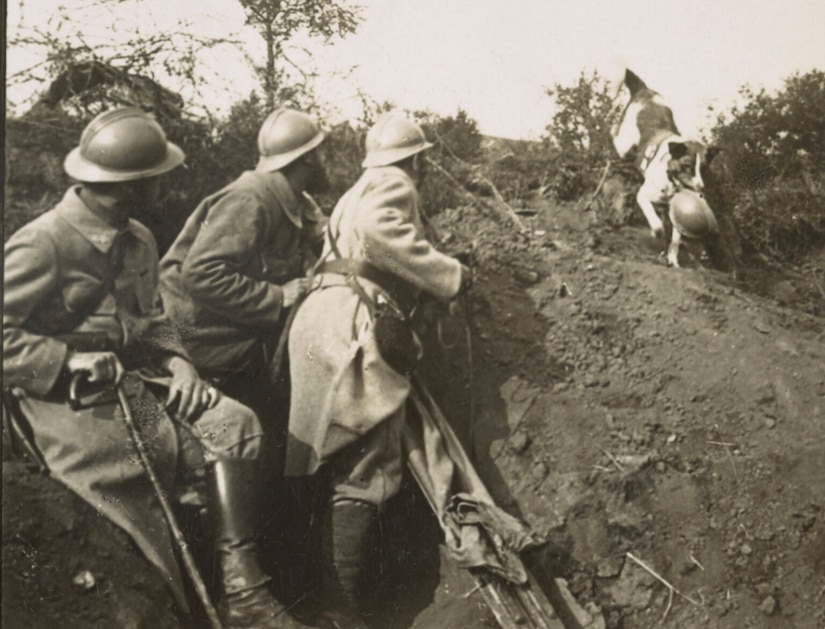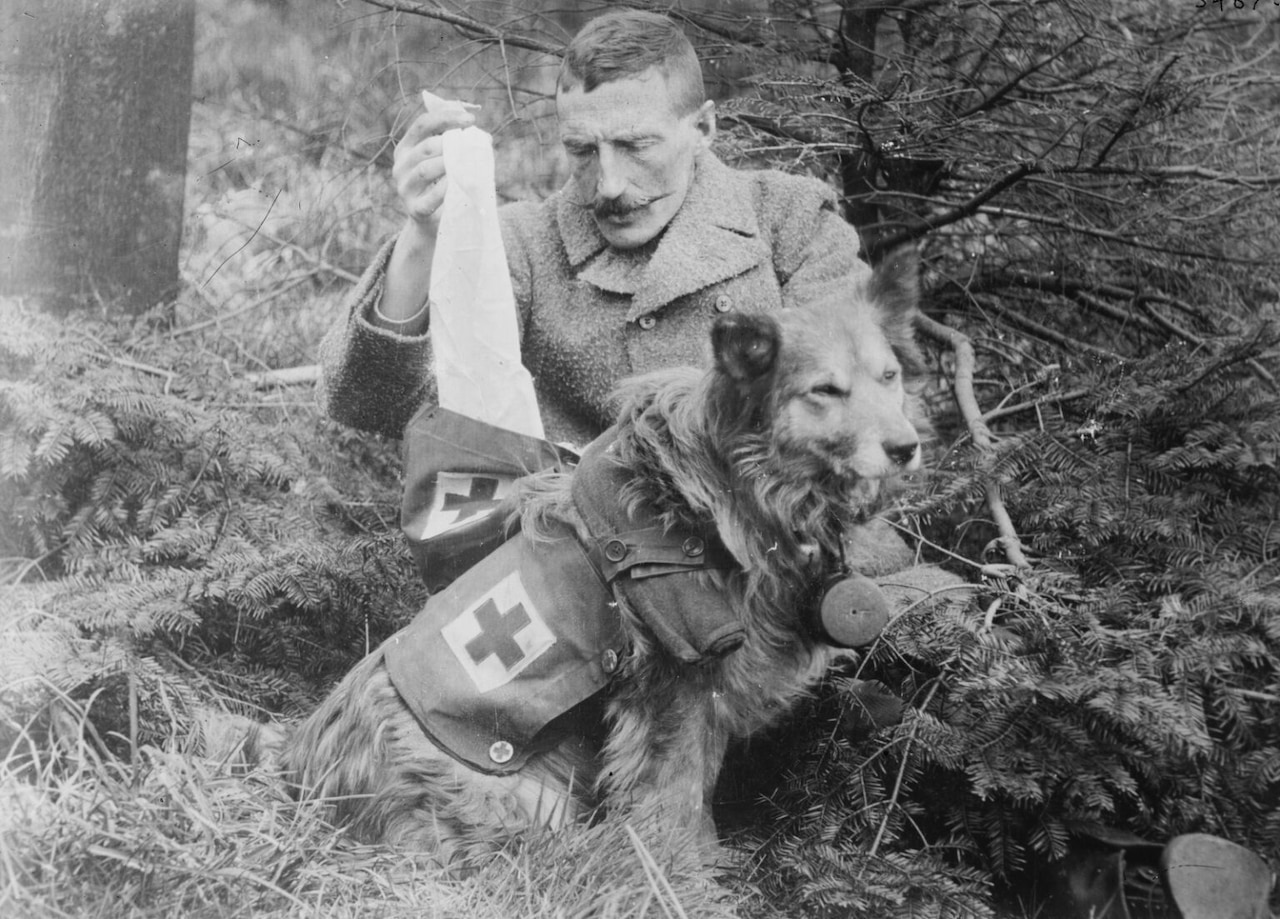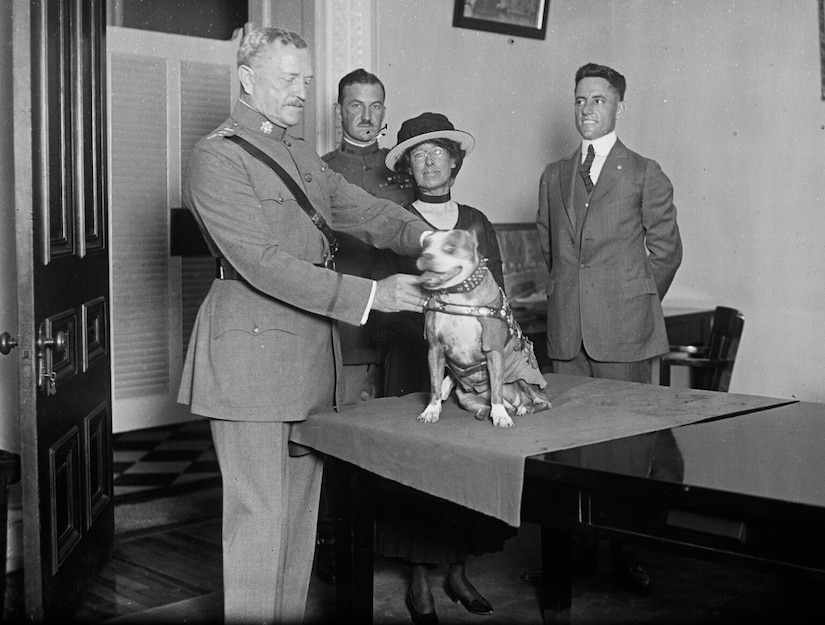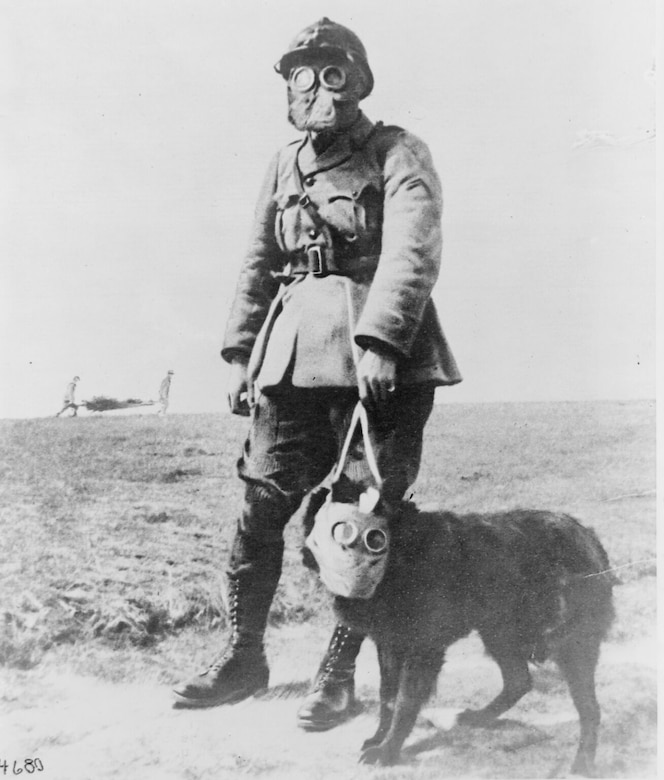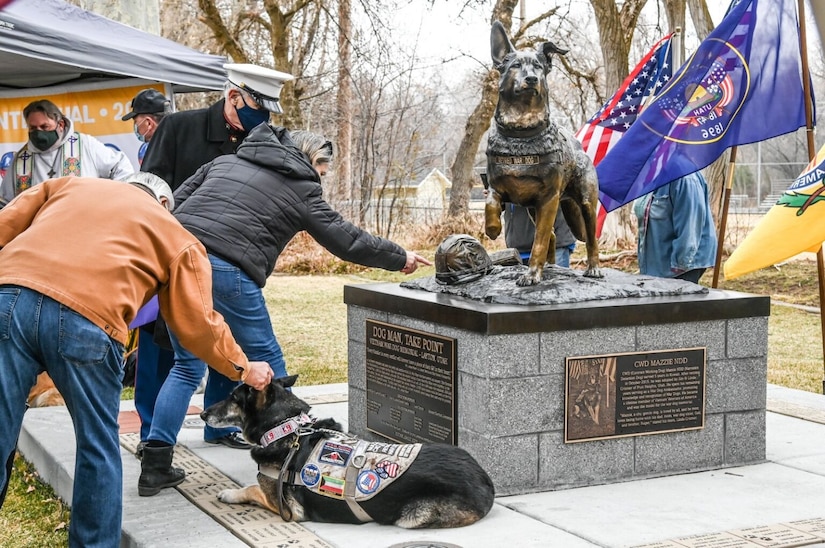Official websites use .gov
Secure .gov websites use HTTPS
Canines have been used in battle going back to ancient times, and they've been a part of just about every U.S. engagement since the founding of the country. The Defense Department's current military working dog program is one of the best in the world, but the idea didn't really catch hold in the U.S. until after our military saw how foreign countries were using the animals in World War I.
The first official use of dogs by the U.S. military started in the early 1900s. According to Charles Dean, author of "Soldiers & Sled Dogs: A History of Military Dog Mushing," Army personnel developed a sled dog program to help alleviate some of the logistical difficulties of traveling through extreme weather conditions in the Alaskan wilderness. Dean said the program was "small, little known and easily forgotten," but it contributed to Allied efforts in both World Wars.
One team of American sled dogs rescued people trapped at a French outpost high in the Alps during World War I, earning the dogs' handler the Croix de Guerre, a French military decoration for valor. According to "The Book of Dogs" by Ernest Baynes, Allied service members had gotten trapped at the post during a blinding snowstorm. They were running low on supplies, so one of the men took his sled dog team to find help. He descended the mountain and loaded 14 sleds with ammunition, despite enemy fire and the extreme weather. Five days after leaving the outpost, he returned, and the men were able to keep the Germans at bay using the supplies he brought back.
Aside from this small, organized set of U.S. dogs, canines were more commonly used in the Great War by German and British troops, who started implementing programs that used them as sentries and messengers.
According to the American Red Cross, messenger dogs — who were faster and more agile than humans, and a smaller target for bullets — would often carry 25- to 30-pound packs of ammunition and rations through dangerous territory. They even took soup to the trenches for soldiers. Some dogs controlled the trench rat population, and many of the animals helped with troops' general mental well-being.
Those who acted as sentry dogs generally had a keen sense of smell to sniff out the enemy. They were taught to do so by repeatedly being approached by someone the dog was unaccustomed to in an enemy uniform, according to Theo Jager, who wrote a training guide for the U.S. Army. These dogs often worked as scouts and guarded various positions, such as weapons factories.
Dogs also helped locate wounded soldiers on the front lines of war. Many of those helpers, known as "mercy dogs," were attached to ambulance units. Lots of breeds were used throughout the war, but United Kingdom historians said the most popular were German shepherds and Doberman pinschers thanks to their strength and agility, as well as their trainability and territorial nature.
So, how did handlers determine if a dog could work as a mercy dog? Once officials determined they had the right qualities, like those mentioned above, they taught them to master basic obedience. Next, handlers took the dogs into the field to teach them how to differentiate between allies and the enemy, and how to tell if a person could be rescued or if they were dead and should be passed over.
The mercy dogs carried saddlebags of first aid supplies and rations, according to the American Red Cross. When they came upon an injured soldier in no-man's land — the area in between trench warfare fighting zones — the dogs would get close enough for soldiers to get into the saddlebags and take what they needed for immediate help.
To keep from alerting the enemy, the dogs were trained not to bark. After finding a soldier, they would go back to their handlers with a piece of clothing or some other item to prove a man had been found. However, that method was eventually replaced because some of the dogs were a little too eager, pulling at soldiers' hair or ripping off much-needed bandages to prove the person's existence. Instead, some overseas Red Cross societies trained the dogs to return to their handlers with a leash in their mouth to show they'd found a wounded soldier. If the dogs didn't find any survivors, they were taught to sit or lie at their handlers' feet.


According to Chapman University researcher and documentary filmmaker Amanda Larsh, the Belgian army also used dogs instead of horses to pull ambulance carts and heavy weapons machinery. Larsh said that the dogs would continue with their mission even if their humans became incapacitated, which led to a greater ability to keep weapons out of enemy hands. The dogs were also a lot smaller than horses and therefore less likely to be hit by gunfire.
The U.S. military didn't officially have any working dogs during World War I, but its service members took note, and many U.S. dogs were brought over in an unofficial capacity to help.
One of the most famous U.S. service dogs was Sgt. Stubby, a small, brindle pit bull-terrier mix with a stub tail. Stubby became attached to Connecticut National Guard soldier James Conroy and even learned some of the soldier's tactics, including saluting, as Conroy trained. When Conroy was sent to Europe, dogs weren't allowed on the ships, so Conroy secretly stowed Stubby in an engine room. His superiors didn't discover Stubby until they reached Europe, so they let the stowaway slide, and Stubby became the unit's official mascot.
Stubby had his own gas mask for the trenches and suffered several gas attacks, which sensitized him to the odor and helped him alert soldiers to the gas before they could smell it. He warned his unit of enemy attacks and even caught a German spy before the man could escape with important Allied information, historians said. Stubby was injured once and treated at a field hospital, just like his human counterparts.
Stubby came home from war a hero and became a staple at victory parades and other patriotic events. By the time he died, he'd met three U.S. presidents and famed Army Gen. John Pershing. A taxidermist kept Stubby's body intact, and he can still be found today at the Smithsonian in Washington, D.C.
Aside from Stubby, the most famous World War I dog was Rin Tin Tin, a German shepherd and war dog for the enemy who was found abandoned in France in 1918. Rin Tin Tin was brought to the U.S. and became a movie star, making his debut in the 1922 silent film "The Man from Hell's River."
Upon seeing the great work the dogs were doing, several groups in the U.S. did try to take a page out of their allies' book and get a military working dog program up and running. However, the war's end in November 1918 also brought an end to that idea, as any plans that had begun on the project were dropped.
During the Great War, as many as 20,000 dogs served the Allied cause, and they were credited with saving thousands of lives. According to Michael Lemish, who authored the book "War Dogs," a wolf-like French dog named Prusco managed to locate more than 100 wounded soldiers during one battle alone. The dog dragged the men to the relative safety of bomb craters and eventually returned with rescue teams to save them.
The legacy of many of these dogs lives on in places like the War Dog Memorial at the Hartsdale Canine Cemetery in Hartsdale, New York. Built in 1923, the memorial — depicting a German shepherd wearing a Red Cross vest beside a dented helmet — is a tribute to the thousands of dogs who worked and died serving in World War I. Other monuments across the country also honor the service of our military dogs over the years.
It wasn't until World War II that the U.S. military officially implemented a working dog program. Its foundation was laid by a civilian organization called Dogs for Defense and the government-run War Dog Program, created in March 1942. Unofficially called the K-9 Corps, the War Dog Program requisitioned about 11,000 dogs who were trained at a center in Front Royal, Virginia, by dog handlers within the Army Quartermaster Corps. The program positively affected troops on the battlefield and eventually led to training dogs for law enforcement, too.
Now, all these years later, our military working dog program is robust and thriving. Learn more about our current-day four-legged fighters here:
Choose which Defense.gov products you want delivered to your inbox.
The Department of Defense provides the military forces needed to deter war and ensure our nation's security.

